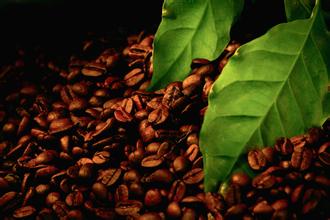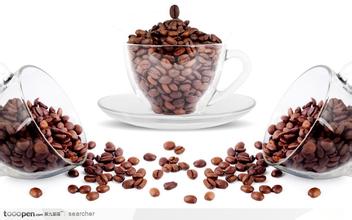Introduction to the drying method of Red Honey Wine with Honey treated Coffee beans
Honey-treated coffee beans are washed in the sun
1. Choose beans: if you put the harvested fruit in the water tank, the ripe fruit will sink, while the immature and overripe fruit will float up and can be removed.
two。 Drying: place the selected ripe fruits in the square and expose them to the sun for 5 or 6 days until fully dried. At this time, the fruit turns dark brown and the moisture content drops to 13%.
3. Shelling: after drying, the peel becomes fragile and easy to fall off, and can be removed by machine. Farms run by enterprises usually have their own shelling factories, while small farms are processed by processing centers.
4. Selection and grading: exquisite farms identify defective beans manually or by machine, pick them out and throw them away. The manual selection method usually uses a conveyor belt about 1 meter wide. Several female workers sitting on both sides pick out the bad beans visually. On some good farms, they are even selected several times until the defective beans are not seen. The machine selection rule uses computer identification to remove defective beans. Then, there is a grading process in which coffee beans are divided into several quality grades according to established standards, with good coffee entering the selected coffee market and bad coffee flowing into the commercial coffee market.
Water washing is the most popular treatment method at present, and most boutique coffee beans will choose water washing method. Washing coffee refining process: harvesting → storage tank (removal of impurities and immature beans) → pulp removal machine (removal of pulp and impurities) → fermentation tank (removal of mucous membrane on endocarp) → washing pool (selection of light and hard beans) → sun drying field (or dryer) → sheller (removal of endocarp) → grading (electronic bean selector or hand selection, (screen, etc.) the appearance of coffee beans washed and processed at → export is relatively neat. And there are few impurities and defective beans, and the water content of coffee beans is generally about 16%. The advantage is that it has less miscellaneous flavor, clear taste and bright sour taste; the biggest disadvantage is that coffee beans are easy to get sour and astringent taste in the process of fermentation. 50 grams of fermented beans will be spoiled by semi-water washing, also known as "honey treatment", which is a compromise between drying and water washing, eliminating the link of water-washing fermentation of coffee fruit. Harvest → storage tank (remove impurities and impurities) → pulp removal machine (remove pulp and impurities) → washing pool (select light and hard beans) → sun field (or dryer) → sheller (removal of endocarp) → classification (electronic bean selector or hand selection, sieve, etc.) the quality of → export honey treatment is stable but not as good as water washing treatment. This method of processing coffee beans by honey treatment has recently been sought after by coffee lovers. It has a sweet taste and is rich in Crema. It is suitable for extracting Espresso from the base of Italian coffee. The advantage is that it can restore the flavor of coffee beans, the coffee is more sweet, and the taste of red wine is outstanding. The disadvantage is that coffee beans are very vulnerable to pollution and mildew during the drying process after the exocarp of coffee berries are removed.

Important Notice :
前街咖啡 FrontStreet Coffee has moved to new addredd:
FrontStreet Coffee Address: 315,Donghua East Road,GuangZhou
Tel:020 38364473
- Prev

Coffee smart cup brewing technique-coffee pull pattern embossing shaking technique
Coffee smart cup brewing technique-coffee pull embossed shake method espresso coffee is no doubt the overlord, when talking about Italian coffee, can not say Italian, to say Italiano (Italian). This is the only way to laugh. Generally speaking, if you see a barista dropping powder from a giant bean grinder into a handle and compacting it, put a huge machine into it.
- Next

The capacity of extracted coffee-introduction to the cleaning principle of Delong coffee machine extractor
Coffee capacity extracted-Delon coffee machine extractor cleaning principle introduced after the completion of the Espresso (after the completion of the coffee handle, coffee pressed powder surface smooth should not have any depression, otherwise it means incorrect filling pressure, need to continue practice.) After using the finished Espresso to add water to make black coffee (American coffee), if the entrance has no miscellaneous taste, no astringent taste, and the coffee does not feel watery.
Related
- What is the meaning of lactic acid fermentation with coffee bean treatment?
- How to judge the state of foam by sound?
- How does the latte pull out the unicorn pattern? Come to get for a little trick to improve the flower pull!
- Will flower pulling affect the taste of the latte?
- Do you know the history of coffee?
- The difference between honey treatment and sun washing what is raisin honey treatment?
- What kind of milk can a novice use to make coffee foam to keep the foam longer? The correct method and skills of milking tutorial sharing
- Why do washed coffee beans taste sour? Flavor characteristics of washed Coffee
- Introduction to the skill of how to practice the size and height of water injection around the circle of hand-brewed coffee
- How do beginners practice coffee flower drawing from scratch?

